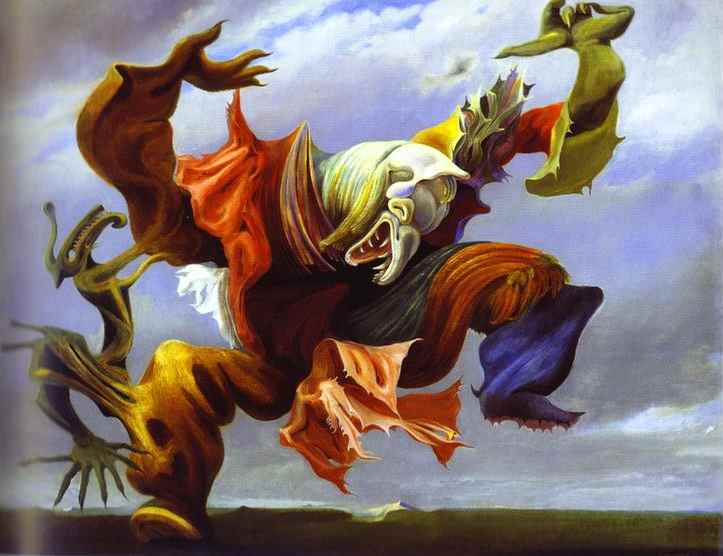 L’Ange du Foyer (1937) ~ Max Ernst
L’Ange du Foyer (1937) ~ Max Ernst
Age of Uncertainty
In the years that followed World War I an uneasiness descended upon much of Europe. Many people had been convinced by the Great War that the traditional European models of society, politics and economics had failed them. Emphasizing this new era of uncertain thoughts were advances in technology, science, art, architecture and psychology, each undermined what came before and reinforced the concept of what was to come was completely new. The United States set the pace throughout the 1920’s with an unheralded stretch of economic growth that kept the economies of western Europe afloat. With the stock market crash in 1929 the world looked for new leaders with new ideas. Out of this time of despair rose Fascist dictators that sought to capitalize on people’s nostalgia for the traditional strength their country used to possess. Ultimately this period of intense economic, social and political change and tumult is aptly termed the age of uncertainty.
Themes
- Impact of the people’s disillusionment to traditional symbols of authority
- Societal Change
- Role of Economics on Government and Society
- Use and Abuse of power
Essential Questions
- How did science challenge traditional ideas of how the world and/or universe worked?
- How was the age of uncertainty represented in works of literature at this time?
- How did artistic movements represent the new thoughts and ideas of the time?
- What role did economics play in altering people’s feelings towards government?
- How did the responses of the US, England and France differ from the responses of Germany and Italy towards the great depression?
- What were the contributing factors to the rise of Fascism in Western Europe?
- Why was appeasement adopted as a policy to respond to aggression?
Assignments
- Assignment 1 : I don’t understand
- Assignment 2: I still don’t understand
- Assignment 3: The Roaring Twenties
- Assignment 4: Economics of the Great Depression
- Assignment 5: Fascism and Mussolini
- Assignment 6: National Socialism
- Assignment 7: The rise of Hitler
- Assignment 8: Expansionist Japan
- Assignment 9: Aggressors on the March
- Assignment 10: Appeasement